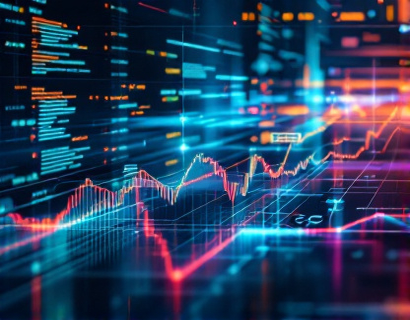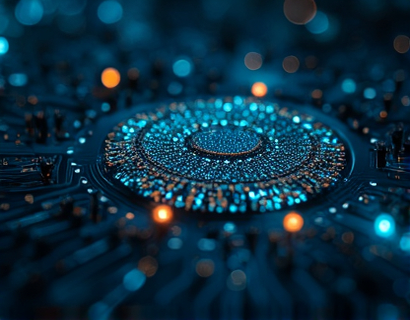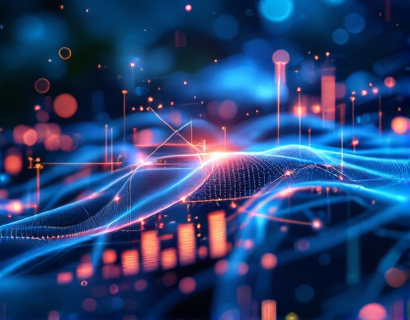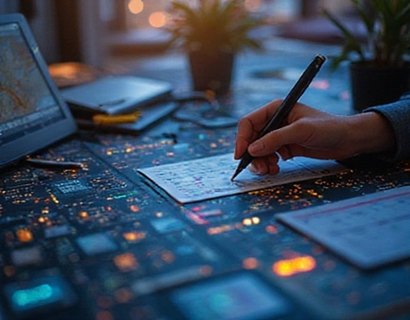Unlocking Enhanced Productivity in the Digital Age: The Synergy of Crypto and AI
The digital age has ushered in a new era of technological advancements, where the convergence of cryptocurrency and artificial intelligence (AI) is redefining productivity and innovation. This article delves into the transformative potential of merging these two cutting-edge technologies, exploring how they can simplify daily tasks and elevate the capabilities of tech enthusiasts and professionals alike. By examining the current landscape and future prospects, we aim to provide a comprehensive understanding of how this synergy is shaping the next generation of digital solutions.
The Intersection of Cryptocurrency and AI
Cryptocurrency, since its inception, has been more than just a digital currency. It represents a decentralized and secure method of transaction, underpinned by blockchain technology. AI, on the other hand, is revolutionizing the way we process and analyze data, automate tasks, and make informed decisions. When these two technologies intersect, the possibilities for enhancing productivity and efficiency become vast and exciting.
The integration of AI into cryptocurrency systems can optimize various aspects, from transaction processing and security to user experience and application development. For instance, AI algorithms can analyze vast amounts of data to predict market trends, enhancing investment decisions and risk management. Similarly, AI-driven smart contracts can automate and enforce contractual obligations with unprecedented accuracy and speed.
Advanced Applications Powered by Crypto and AI
The combination of cryptocurrency and AI is giving rise to advanced applications that simplify complex tasks and streamline workflows. One such application is decentralized finance (DeFi), which leverages AI to create more efficient and accessible financial services. DeFi platforms use AI to offer personalized investment advice, automate trading strategies, and enhance security measures, all while maintaining the decentralized nature of blockchain.
Another area where this synergy shines is in the realm of supply chain management. AI-powered systems can track and predict supply chain disruptions, optimize inventory levels, and ensure transparency and traceability. When integrated with cryptocurrency, these systems can facilitate seamless and secure transactions across global networks, reducing costs and increasing efficiency.
Enhancing Productivity with AI-Driven Tools
The productivity gains from combining AI with cryptocurrency extend beyond financial applications. AI-driven tools can automate routine tasks, freeing up time for more strategic and creative work. For example, AI-powered virtual assistants can manage schedules, prioritize tasks, and even draft emails, all while learning from user preferences and behavior.
In the context of cryptocurrency, AI can enhance wallet management and security. AI algorithms can detect unusual activity, predict potential security threats, and provide real-time alerts to users. This not only protects digital assets but also ensures that users can manage their crypto portfolios with greater confidence and ease.
Connecting Tech Enthusiasts with Digital Innovations
The synergy of crypto and AI is not just about technology; it's about creating a community of tech enthusiasts and early adopters who are eager to explore and leverage these advancements. Platforms that focus on this intersection serve as hubs for innovation, where developers, researchers, and users can collaborate and share insights.
These platforms often feature forums, workshops, and hackathons that bring together experts and novices alike. By fostering a collaborative environment, they accelerate the development of new applications and services that harness the power of AI and cryptocurrency. This community-driven approach ensures that the technology remains user-centric and continuously evolves to meet real-world needs.
Ucosystem: A Case Study in Crypto and AI Integration
To illustrate the practical applications of crypto and AI, consider the concept of a Ucosystem, a term used to describe an ecosystem that integrates various blockchain-based applications and services. A Ucosystem focused on AI-driven solutions can offer a wide range of tools and services designed to enhance productivity and simplify daily tasks.
In such an ecosystem, users can access decentralized applications (dApps) that utilize AI for tasks like data analysis, content creation, and even mental health support. For instance, an AI-powered dApp could analyze user data to provide personalized productivity tips, while another could use natural language processing to generate high-quality content with minimal effort.
Moreover, a Ucosystem can facilitate the creation and trading of digital assets that represent various forms of value, from data to skills. AI can optimize the matching process, ensuring that users find the most suitable assets and services for their needs. This not only enhances individual productivity but also fosters a more interconnected and efficient digital community.
Challenges and Considerations
While the potential of combining crypto and AI is immense, there are several challenges and considerations that must be addressed. One of the primary concerns is regulatory compliance. The decentralized nature of cryptocurrency and the rapidly evolving regulatory landscape pose significant challenges for developers and users alike.
Another challenge is the technical complexity involved in integrating AI with blockchain systems. Ensuring seamless interoperability and maintaining high levels of security and privacy are critical. Additionally, there is a need for education and awareness to help users understand the benefits and risks associated with these technologies.
Future Prospects and Innovations
Looking ahead, the future of crypto and AI is bright, with numerous innovations on the horizon. One promising area is the development of AI-powered oracles, which can provide reliable and trustworthy data to smart contracts. This will enable more sophisticated and autonomous decentralized applications.
Another exciting development is the integration of AI with quantum computing, which could exponentially enhance the processing power and capabilities of blockchain networks. This synergy could lead to breakthroughs in areas such as cryptography, optimization, and complex problem-solving.
Furthermore, the rise of Web 3.0, a decentralized internet powered by blockchain and AI, promises a more secure, private, and user-controlled digital experience. In this future, users will have greater control over their data and digital identities, leading to more personalized and secure interactions online.
Conclusion
The convergence of cryptocurrency and AI represents a paradigm shift in how we approach productivity and innovation. By leveraging the strengths of both technologies, we can create advanced applications and services that simplify daily tasks, enhance security, and unlock new possibilities. As the digital landscape continues to evolve, those who embrace this synergy will be at the forefront of shaping a more efficient, connected, and empowered world.










































